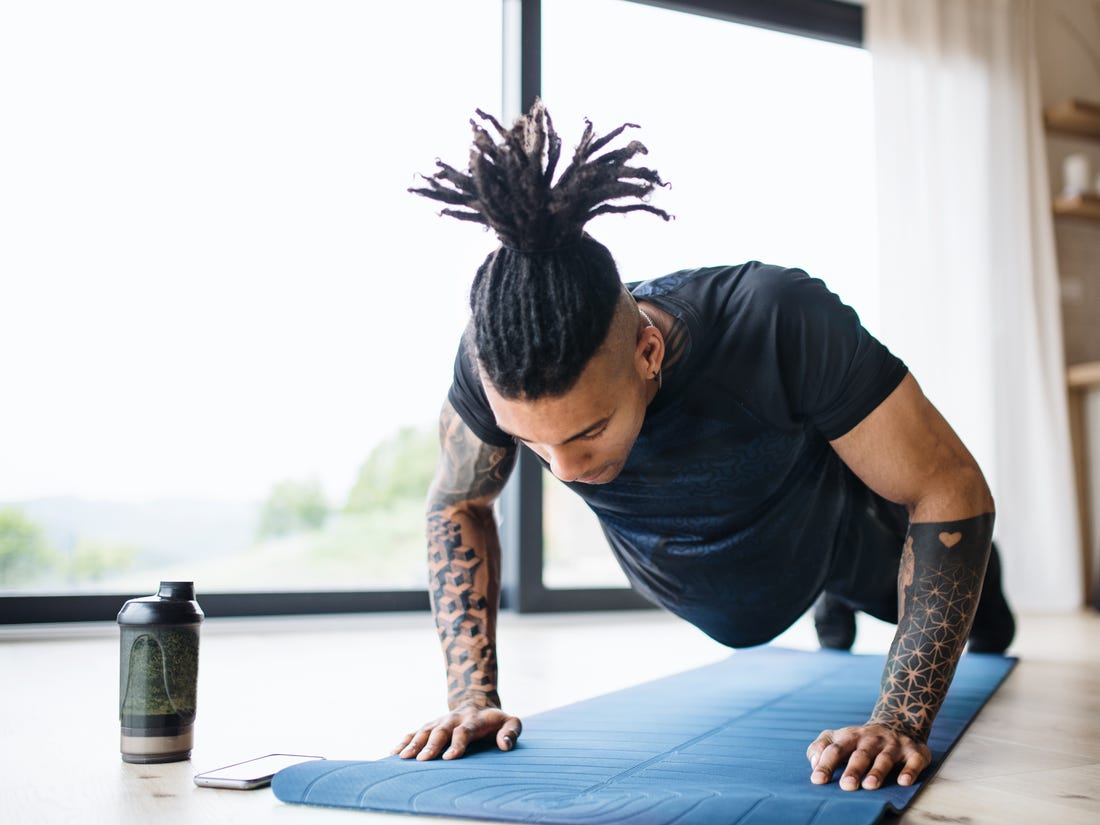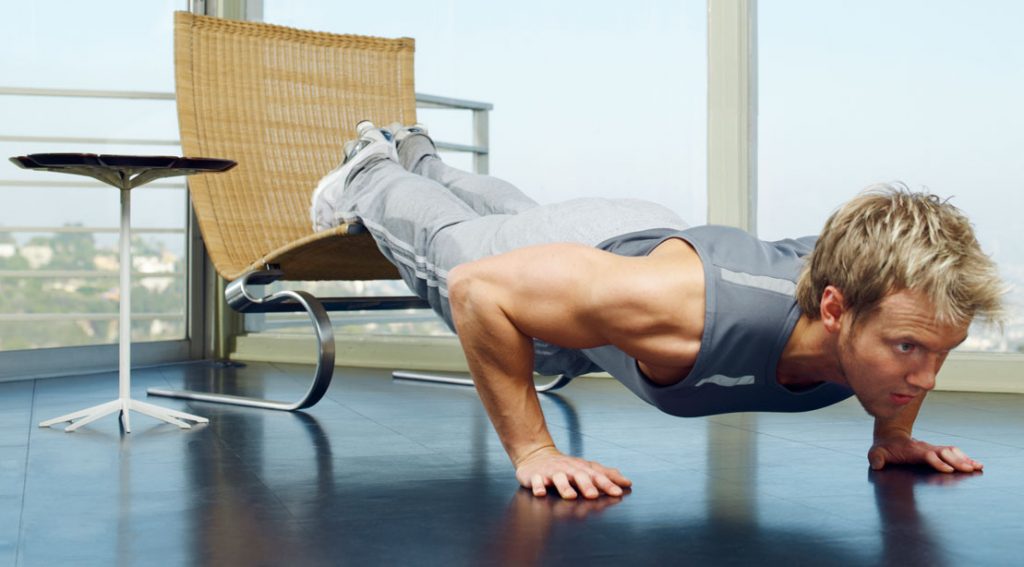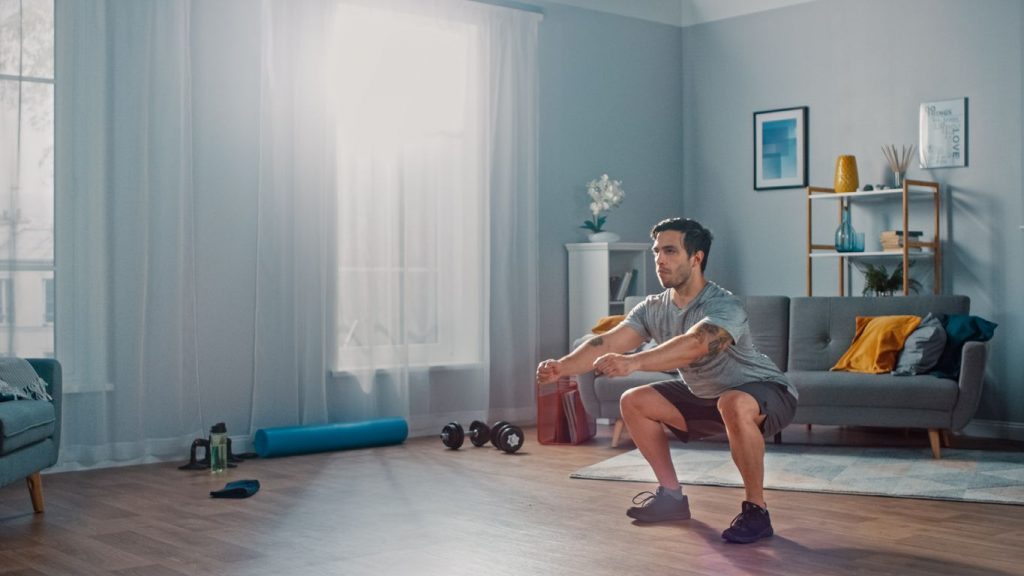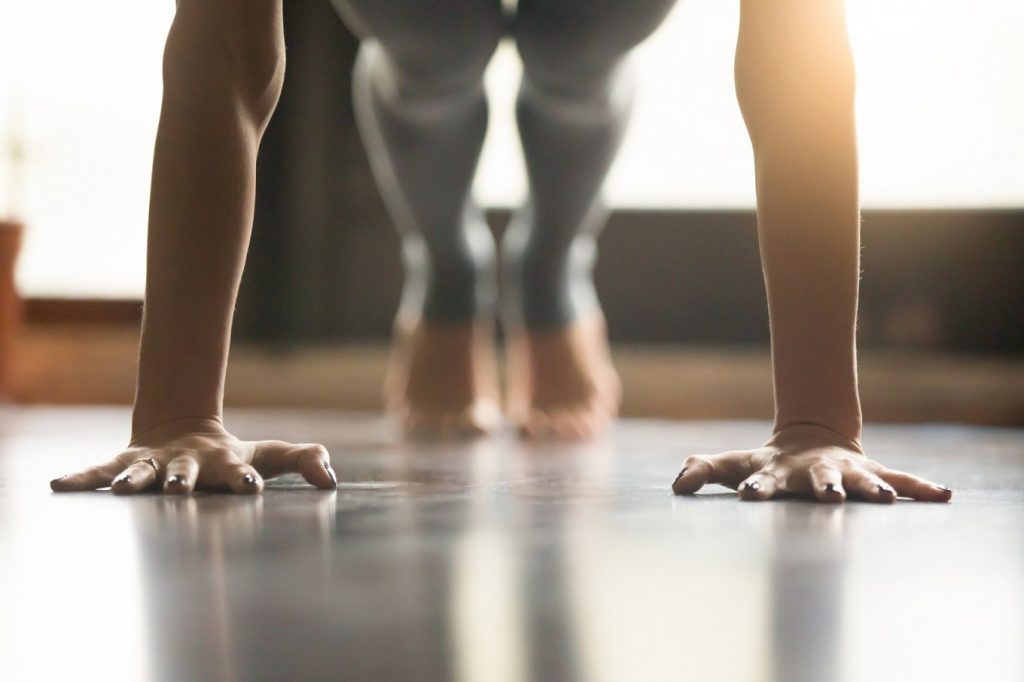
The best online fitness resource you'll ever need. We filter out the BS to ensure you meet your health and fitness goals!

The best online fitness resource you'll ever need. We filter out the BS to ensure you meet your health and fitness goals!

Whilst gyms, boxes and studios were the places to be mere weeks ago, self-isolation in wake of the global pandemic Covid-19- coronavirus- has meant that gyms are shutting down, group meetings are out, and in many countries, quarantine is keeping many people in their homes practically 24/7. Many of us have had to get creative with our health and fitness goals.
In these circumstances, how can you get a good workout in?
Well, fitness extends beyond what you can do with a barbell, or in spin class, or how far you can jog. Fitness can take many forms and can be adapted to fit comfortably into basically any life situation- ask any prisoner or astronaut what their training regimes are, and they will likely tell you about how they manage intense exercise in confined quarters, with limited equipment.
So, what does this mean for you? In this article, we’ll be looking at three rules you need to follow to make sure that your home workouts do what you need them to do, and we’ll be looking at a group of exercises you can perform with no more room than your living room floor, and with minimal kit.
Regular exercise has many benefits (you don’t need to tell us here at This Is Why I’m Fit twice), from stress reduction to cardiovascular health to strength and mobility, and everything in-between, so it needs to be brought into the home right now.
In lieu of actually being able to get out into the world, people who might otherwise not have taken part in a regular fitness regime are beginning to make the most of their situation and get in some form of daily workout. Those used to specialised equipment and hard training are making the most of what they have in their own homes, hitting bodyweight workouts, on-the-spot aerobics sessions and yoga classes like never before.
But what advice can you follow to make sure that you maximise your training potential?
One of the most crucial aspects of any training regime (not just those undertaken during self-isolation) is timetabling, making training part of your daily routine and planning it accordingly. This brings us onto rule number one for training during coronavirus:
We all need structure right now. If you’re not working due to coronavirus, this will apply to you even more so. Without the regular schedule of breakfast, commute, work, lunch break, commute, and so on, days can stretch on forever and time can become meaningless.
Inspiring yourself to be productive in this situation can be hard. Inspiring yourself to workout can be even harder. However, fix the training and you’ll go some way to fixing the temporal no-man’s land in which we’re all living.
One way to do this is to schedule training regularly, perhaps split it up into a couple of shorter sessions and do it at the same time every day. Begin your day with a ten- to fifteen- minute workout. Tell yourself you will do it at 8am and do it at 8am. Aerobics or yoga can really set you up for the day, as can this strict routine. Then get on with whatever you need to do, and hit your second session in the early evening, when you might otherwise usually be leaving work. Tell yourself you will do some exercise at 7pm and do it at 7pm. Go for twenty- to thirty- minutes. This will bookend your day nicely, make you feel like you have some kind of rhythm to your life, and will make sure that you’re regularly making use of the physical and emotional benefits of exercise.
Of course, most of us don’t set up our living rooms for intense athletic endeavour: this is what the gym is for. If, like most people, you generally train away from home, or if you’re new to training, you won’t have a whole lot of equipment to play with, which leads us onto our second point:

You need to get creative if you don’t have any equipment- or if you don’t have much- and if you’ve only the space of a regular bedroom or living room in which to train. You can’t press heavy barbells, or take part in long sprints, or perhaps even find somewhere to do pullups.
However, there are some basic movements that anybody can do. This is where we get into what might be called ‘prison workout’ territory: using your body, in a combined space, to achieve what you would usually need a whole, fully kitted out gym to do.
Again, this is where something like yoga or Pilates can work really well: all you need is a few square feet and perhaps a yoga mat or a comfortable rug or carpet. However, most compound movements can be made to work with your bodyweight.
Bodyweight squats, push ups, crunches, planks, handstands… the list goes on, and we’ll go into some core examples below. If you can do it under load in the gym, you can do it here. Of course, if you’re used to squatting 200kg, bodyweight squats alone won’t help you much. This is where the creativity comes in, as you try to push the format around a little bit.
Try a HIIT protocol like Tabata or EMOM (Every Minute on the Minute). For the former, Tabata apps are abundant, but you can also time yourself using any clock or stopwatch. Squat for twenty seconds, rest for ten seconds. Repeat eight times. For EMOM, try hitting 10 squats followed by five push ups at the beginning of every minute, resting for the rest of the minute, ten times. You’ll burn out quicker than you might imagine.
Alternatively, get creative with the type of exercise. If squats are too easy, try Hindu squats to work on balance and mobility. Try squat jumps, or box jumps, or walking lunges if you have access to outside space. If push ups are too easy, try plyometric push ups, or dips, or deficit push ups using a couple of stacks of books. Try handstand push ups, or simply have somebody sit on you as you go for regular push ups. Resistance is key, but this needn’t mean barbells and dumbbells: anything that makes you fight harder against gravity will fit the bill.
If you’re new to all of this, or if you’re elderly, or for any other reason find bodyweight exercises hard work, you can modify them to make them more manageable as you adapt. Rather than squatting, try simply sitting down on a dining chair, standing up again, and repeating. Aim for a couple of sets of 10-20 reps. For push ups, try performing them on your knees, or try doing push ups against the wall, controlling the angle of your body to adjust the resistance.
This is all the basic stuff we learn at the gym, transplanted homewards. The core principles underlying everything you do at home should be basically the same, however, which takes us onto our third point:
We want progressive overload, so that every week we are working whatever we are working in a harder, more challenging way than we were doing last week. This principle should inform any and every training regime any of us ever take on.
In order to do this, we want to manipulate FITT, which stands for:
To seek progressive overload, make one of these more challenging. For frequency, if two sessions of whatever you do at home is becoming too easy, add a third or even a fourth session. For intensity, if those squats are getting easy, do them against the clock, halving your rest period, or working into a HIIT routine. For time, that fifteen-minute yoga class can be swapped out for a half-hour yoga class. For type, if those squats are becoming easy, move onto squat jumps or walking lunges.
This is all stuff you should be doing in the gym, anyway. You still need to be doing it over the coming weeks and months, adapting your at-home training for progressive overload so that you come out of quarantine fitter and stronger than you went into it.

With these in mind, if you do want to take part in a bodyweight workout, there are some basic moves that you can easily perform every single day, no matter the space you’re in. Below, we’ve put together everything you need to know to create a well-balanced, full body workout using minimal equipment.
This is a good rudimentary session plan and can be used either for beginners looking to get into home training, or by more advanced athletes wanting to revisit the basics. It targets the full body, using large, compound movements that hit multiple muscle groups, and will help you to build core stability and full body strength.
You will only need your own bodyweight to complete this workout. We will be using four basic exercises, each of which should be performed for 3-4 sets of 10-14 reps.
The exercises are:
Squats are a massive bodyweight exercise, a full compound movement, that will work your legs, glutes, core and back. Start off doing them with just bodyweight, and if these get too easy then find something heavy to hold while you do it. Hold a dumbbell in each hand, grab a sandbag to your chest, or even just get a couple of bags of sugar or flour- anything to add a little more resistance.
To perform a squat:
If squats are the king of bodyweight exercises for your legs, lunges are a close second. The stimulus into your legs is slightly higher than with a squat, so you won’t need to reach for extra weights right away. A lunge in any variation will work the muscles in your lower body, including your quadriceps, hamstrings, glutes, and calves.
To perform lunges:

The plank is a full body bodyweight exercise that emphasises abdominal strength and puts a lot of stabilising pressure through the arms and shoulders. It is perfect for training core strength in a home workout.
To perform a plank:
Push ups are one of the best bodyweight exercises going for your arms, chest and shoulders, and are perfect for your home workout. They will hit your pectorals hard, alongside your shoulder muscles, triceps, and abdominals, and your latissimus dorsi and biceps as stabilising antagonists.
To perform push ups:
Let’s get into a bit more of an intermediate setting here, using a few different movement variations alongside some very simple pieces of equipment. You will need some basic dumbbells to perform these, and these can usually be bought online for $40 or less. For the workout, perform the exercises listed above, for your 3-4 sets of 10-14 reps, but add in a couple of additional dumbbell movements from the list below.
The overhead press is one of the greatest ways to build strength and muscle through your upper body, emphasising the shoulders.
To perform the overhead press:
Bent over rows are great for building up your back, especially working the upper portion of your latissimus dorsi and your rhomboids. You can either do them from standing, bent over, using both hands at once, or alternatively as single arm rows, resting your other hand or even your hand and knee on a bench or chair.
To perform the standing bent over row:

Renegade rows are one of the hardest core and back exercises you can find. They represent a large step up from the regular, humble plank.
To perform renegade rows:
Squat thrusters combine a squat and overhead press, working legs, shoulders, arms and core in synchronicity. You will perform a squat to a full range of motion, before coming up to perform an overhead press.
To perform squat thrusters:
There are many types of home workout you can do to get you through the coronavirus lockdown. Choose yoga or Pilates for a good quality, home bodyweight workout; try an online cardio or aerobics class to spike your heart rate; or else perform the above exercises with good form, using limited equipment, pushing yourself through ever increasing rep ranges or weights.
Follow the advice in this article, and there should be no reason to let your fitness slacken as you find yourself suddenly housebound.